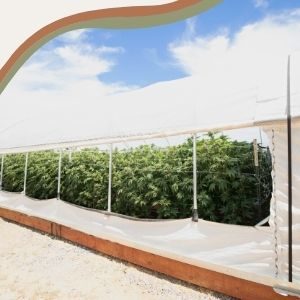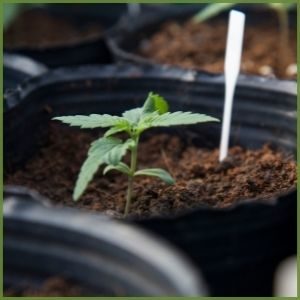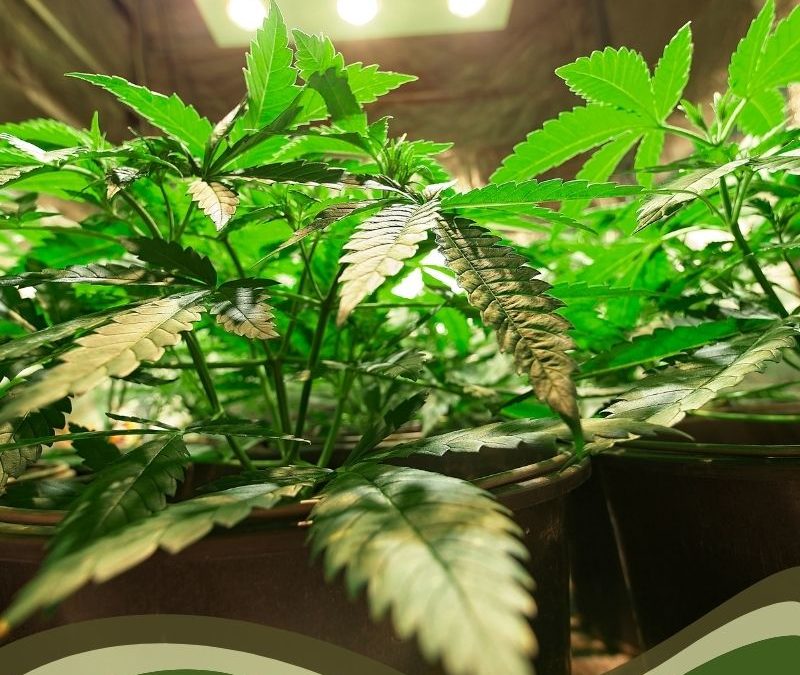Cannabis is a diverse plant with many different strains that are not created equal and will react differently to various factors. Various cannabis strains have unique flavor profiles, color, size and intensity of THC or CBD concentration, many of which can be influenced on the growing environment. All plants including fruits and vegetables, cannabis and hemp, are formed by their environments.
Growing cannabis outdoors will retain certain characteristics of the surrounding environment much like wines from certain regions have a unique flavor and scent. Outdoor grown cannabis is usually less fragrant by absorbing scents of its surroundings whereas indoor grown cannabis tends to smell more like itsterpenes.
Visual Clues: Indoor vs. Outdoor Grown Cannabis
There are some tell-tale visual signs that indicate whether marijuana has been grown indoors or outdoors. Some of the most noticeable differences are in size, trichome density, and color.
Size – The size and tightness of buds is a visual indicator of indoor vs. outdoor grown cannabis. Typically, things are bigger outdoors with bigger and chunkier buds. If you can see the stem itself, a thicker stem is a sign of outdoor growing. Indoor growing usually results in smaller buds that are denser than the larger, more loosely packed outdoor buds. Indoor plants are of typically higher quality as indoor growing allows for tight control of variables and can be tailored to produce a very high quality plant.
Trichome density – Indoor grown cannabis is typically more tightly packed, with more trichomes visible than outdoor grown pot. This is due to the controlled environment of indoor growing vs. an outdoor environment where the nugs are usually larger, and the trichomes have to work a lot harder to cover an entire bud. Indoor, tightly packed nugs are often glimmering with trichomes vs. the sparser trichome density on outdoor buds.
Color – Marijuana grown outdoors is usually darker, with a more weathered look. Indoor grown cannabis is usually lighter but can also be vibrant colors of purple, orange or red. If the cultivar produces purple flowers, indoor buds will be in lighter shades of purple vs. a deeper purple when grown outdoors, depending on the seed genetics. The color on the bottom of the buds are another indicator, outdoor grown buds usually have a light brown color at the bottom of the base whereas indoor grown buds are the same purple or green throughout.
Potency of Indoor vs. Outdoor Grown Marijuana
The jury seems to still be out if you are looking for a clear answer on what produces a more potent bud, indoor or outdoor? Some cannabis connoisseurs will tell you that outdoor produces a higher concentration of THC and CBD as nothing does the job better than mother nature. While others will swear by the potency achievable with the tight control of indoor growing.
Outdoor grown cannabis tends to have a higher level of terpene content due to greater exposure to sunlight with the right amount of natural light and complex soil. Indoor grown cannabis can be grown in ideal conditions with controlled exposure to introduce CO2 into the soil, that increases THC concentration. While one method isn’t guaranteed to produce a stronger crop than the other, your preference for natural elements or a tightly controlled environment combined with the various pros and cons of each method may sway your thinking. Both indoor and outdoor grown cannabis produce high concentrations of quality bud, and it may be more dependent upon the strain and the care taken with tending to your garden.
Pros and Cons of Growing Indoors:
Pros:
- Control – tight control over all growing variables
- Year-round growing – can harvest all year regardless of climate
- Consistency – easy to produce high quality cannabis repeatedly
- Appearance – indoor flowers preserves the integrity of the buds
- Access – easy to take care of your plants when they are in your home
- Secrecy – indoors makes it easier to grow discretely
Cons:
Equipment cost – more costs are associated with growing equipment to create and maintain the environment including soil, nutrients, containers, lighting, tent or grow space, ventilation, etc.:
- Challenges for rookies – new growers may have a learning curve getting all the variables right
- Smaller yield – indoor crops tend to produce a smaller yield unless you have enough indoor grow space
- Legality – you can’t deny a crop is yours when it’s in your house. Know the laws in your state.
Pros and Cons of Growing Outdoors:
Pros:
Lower cost – at the very least, you’ll need lands and seeds. Mother nature takes care of soil, lighting and ventilation.
- Less maintenance – this depends on the climate and location of your water source.
- Maximum yield – growing outdoors typically produces larger yields. Plants grow taller without the restriction of grow space and close lighting
Cons:
Shorter growing season – usually one harvest season per year
- Less control over variables –outdoor crops are subject to factors beyond your control such as drought, frost, storms, insect infestation or animal interference.
- Appearance – outdoor plants exposed to the elements produce a more weathered look.
- Secrecy – it’s harder to keep an outdoor crop private and discrete.
Neither method is considered better than the other, the differences depend much upon your methods and techniques and the type of cannabis strain you choose to grow. If you prefer a strain that is grown naturally and want larger plants with high cannabinoid levels, you might prefer outdoor growing. If you enjoy having tight control over your plants and want year-round harvesting, indoor might be more rewarding for you.
As always, start with high-quality cannabis seeds in the strain of your choice. Mosca Seeds offers quality cannabis seeds in various types including feminized auto-flowers and feminized photoperiod to ensure female plants. Check out the Seed Bazaar and happy cannabis growing whether indoors or outdoors.
